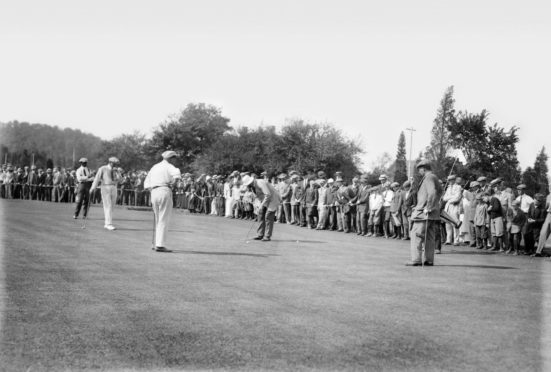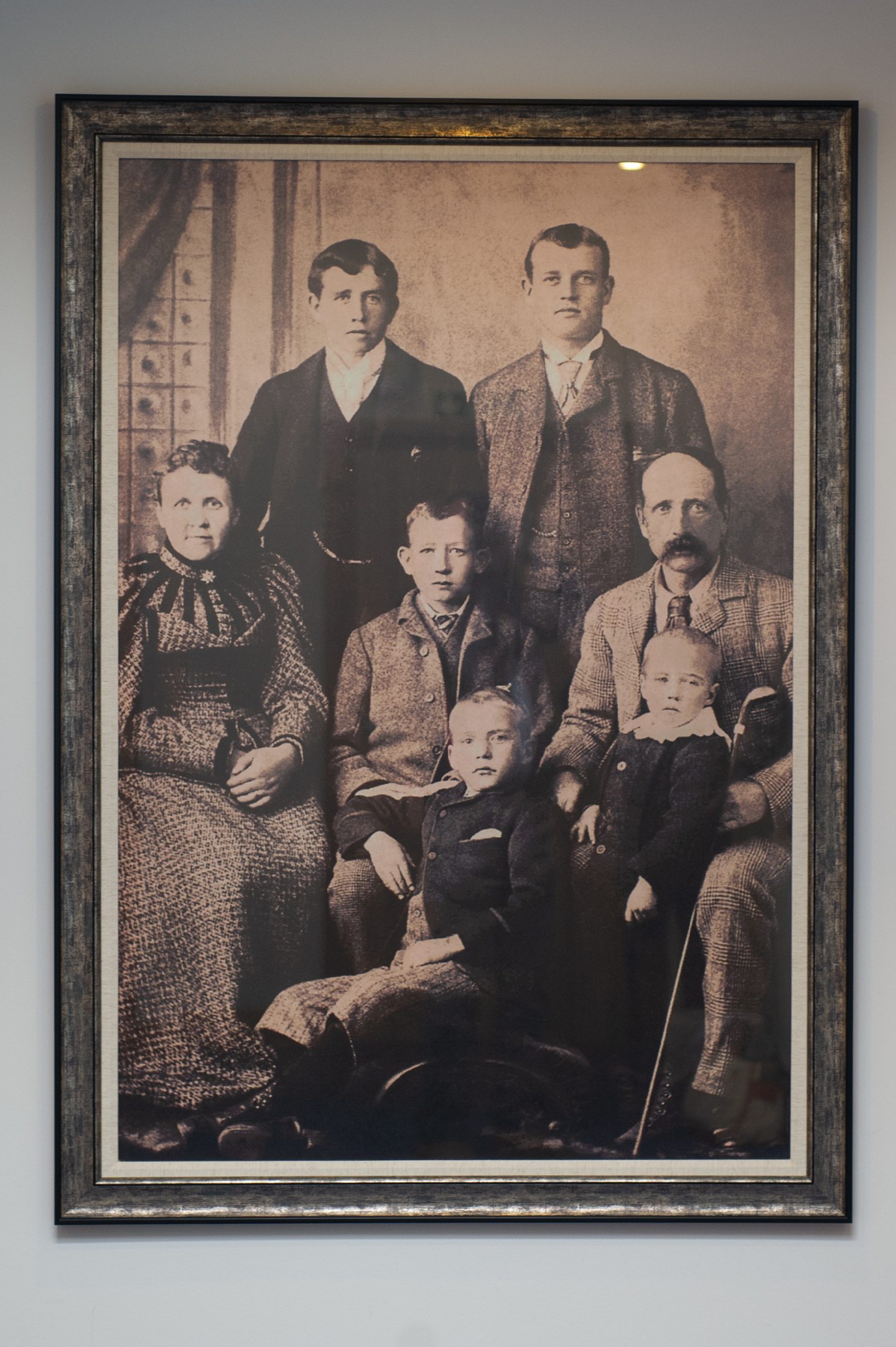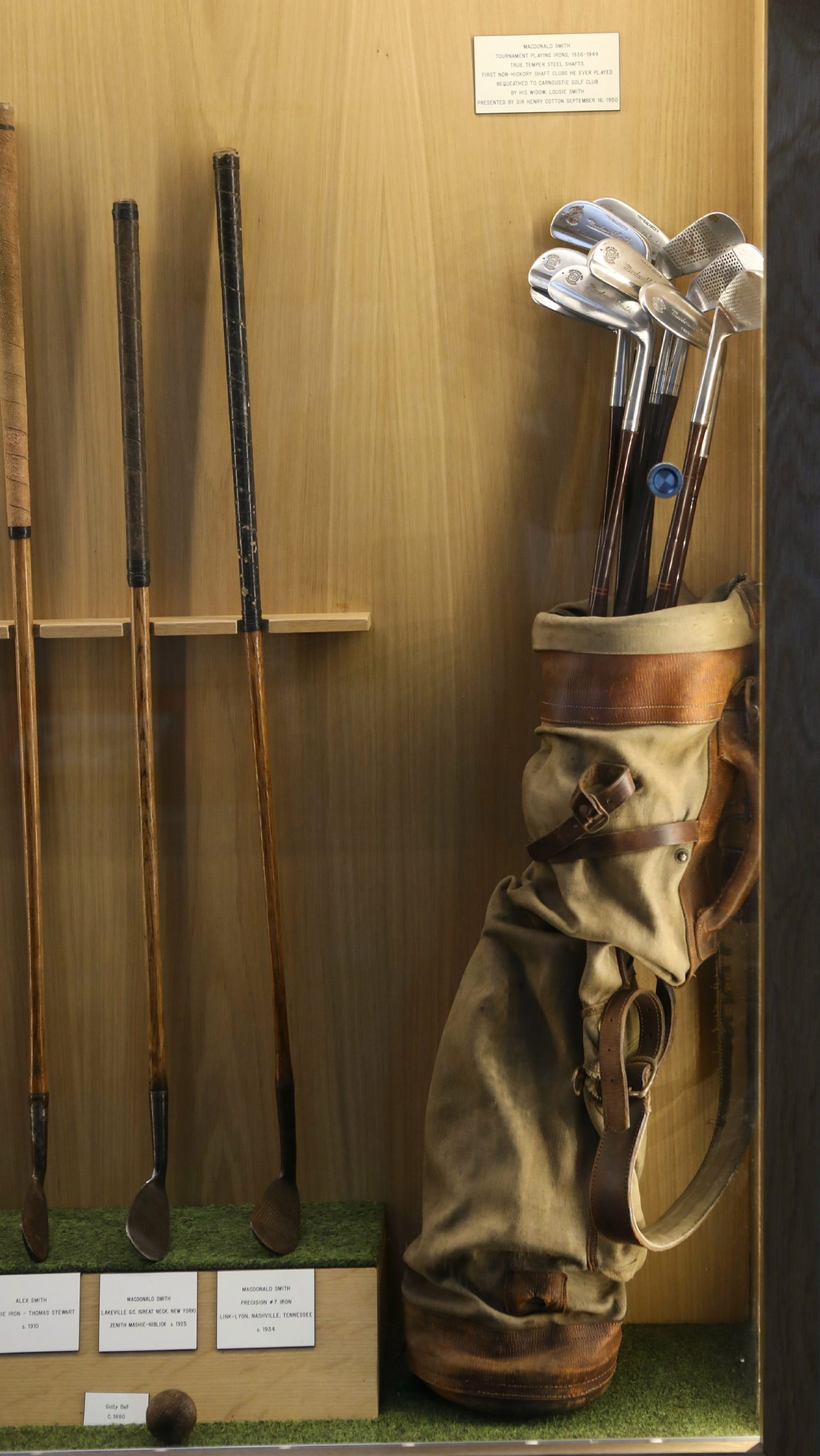In 1906, Carnoustie-born Alex Smith topped the leaderboard at the Onwentsia Golf Club in Lake Forest, Illinois by seven shots. He had clinched his first major – The US Open was his.
It was seven years after his brother Willie had also secured the title. From growing up as brothers who all lived life on the Carnoustie green before setting sail and emigrating to American shores, this is the story of the Carnoustie golfer who won the US Open twice and his family.
Growing up in Scotland
Alex was born in January 1874 to John and Joan Smith in Carnoustie. He and brothers John, George, Jim and MacDonald or Mac as he was better known, would never be far from the course as they grew up.
Dad John was a greenkeeper at Carnoustie Golf Club and the five boys would often go to work alongside their father caddying, golf club-making and doing whatever they could to make a living.
It would be that club making skill that would give Alex the opportunity to be one of the first Carnoustie golfers to emigrate to America and change the game of golf in the US.
Living in America
As golf clubs began springing up around the United States they needed professionals that knew what they were doing, locals didn’t yet have the expertise to carry out jobs such as club making so they turned to the Scots to help.
Alex was one of those offered a job and in 1898 he left Carnoustie spending 12 days on a steamboat to Ellis Island, New York, and then went 100 miles on a horse and cart at the other end to Chicago.
Quickly Alex became highly respected and would be the go-to man for clubs looking for pros, with him recommending boys from back home.
Just three months after his arrival he would call for younger brother Willie to join him in the States and become a pro at Shinnecock Hills in New York.
It would be that invitation which would enable Willie to compete in the 1899 US Open at the Baltimore Country Club’s Roland Park Course.
He won by a margin of eleven shots which was a record that wouldn’t be broken for over 100 years until Tiger Woods won the 2000 championship by fifteen shots.
That would be the first record the brothers would set, the second would come in 1906 when Alex claimed his first victory making the brothers the first siblings to have both won a US Open title – a record which still stands.
Alex’s victories as the Smiths unite
In 1901, Alex just lost out on clinching the title after fellow Scottish ex-pat Willie Anderson won the tournament in a play-off. Anderson would go on to win the tournament a further three times in 1903, 1904 and 1905 becoming the first golfer to win four titles.
Glory was coming for Alex though and after Willie Anderson’s three consecutive wins Alex came in on top seven shots clear of second place during the 1906 US Open at the Onwentsia Club in Lake Forest, Illinois.
His 72-hole score of 295 was the lowest at either the US Open or the British Open up to that time, and he won $300, just under $10,000 in today’s money which isn’t a patch on the purse on offer in the 21st century with 2021 winner Jon Rahm pocketing a cool $2,250,000.
By 1908, railway barons had purchased an estate from the government called Mount Diablo in California making a recreational home for their families there by building a course.
Head of the Smith family, John was sent for to become green keeper at the course meaning the last of the Smiths arrived in America with John, Joan and the other sons, including Macdonald all setting up home in the golden state.
Mac was just 19 when he joined Alex at the 1910 US Open played over the St Martin’s course at the Philadelphia Cricket Club.
It would turn out to be a battle of the brothers on the final day of play as Alex and Mac entered a three-man play off alongside US golfer John McDermott.
Unfortunately for Mac it was his older brother’s day and Alex secured his second title with John coming in second place and the youngest Smith coming in third.
Alex played in eighteen US Opens in total and accumulated eleven top ten placings and John McDermott went on to become the first US born player to win the US Open in 1911.
Macdonald Smith – one of the best golfers with no major
Despite his two brothers clinching major titles, Mac Smith is often regarded as one of the best golfers of all time, who never managed to win a major.
Mac went on to win 25 official events on the PGA Tour, and placed in the top ten of major championships a total of 17 times including three second-place finishes: at the U.S. Open in 1930 and The Open in 1930 and 1932.
His runner-up finishes at both Opens in 1930 were to noted amateur Bobby Jones, the winner of the Grand Slam that year with Gene Sarazen winning the 1932 Open Championship.
Mac scored four more wins in significant US tournaments, between 1912 and 1926, all of which came in events later classified as PGA Tour events.
Smith also suffered a heart breaking near-miss at Prestwick Golf Club during the 1925 Open Championship, when he was the 54-hole leader.
The final round would end in a disappointment after he shot a disappointing 82 and finished three strokes back, in fourth place with Jim Barnes won.
Crowd control broke down (with too few marshals and no gallery roping), and with the numerous spectators, many of whom had travelled to watch him, invading the playing areas, delays, chaotic conditions, and deflected shots were caused.
Ever since Alex’s emigration to America he has often been described as the “pied piper” of trans-Atlantic golf – ultimately attracting 300 Carnoustie boys to take up golfing jobs in America.
The Smith family are still celebrated highly in the American gold circuits and their importance to the game in the United States has never been forgotten.













